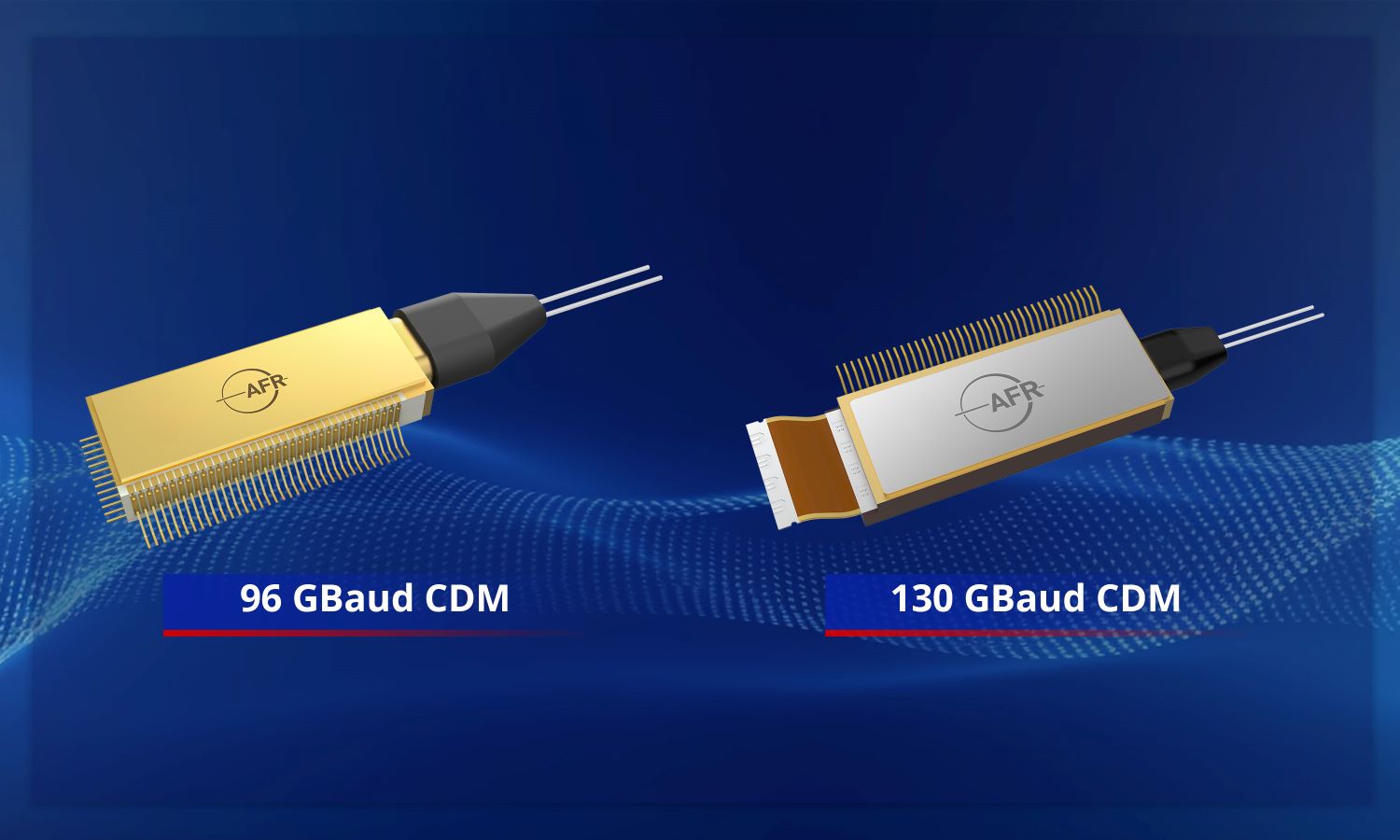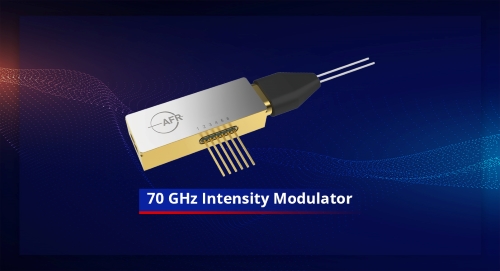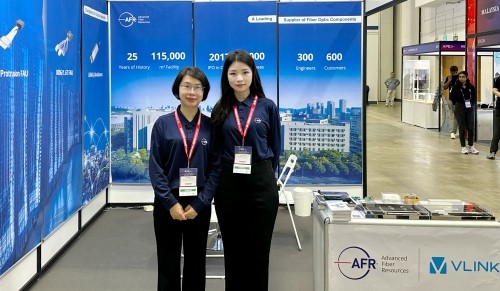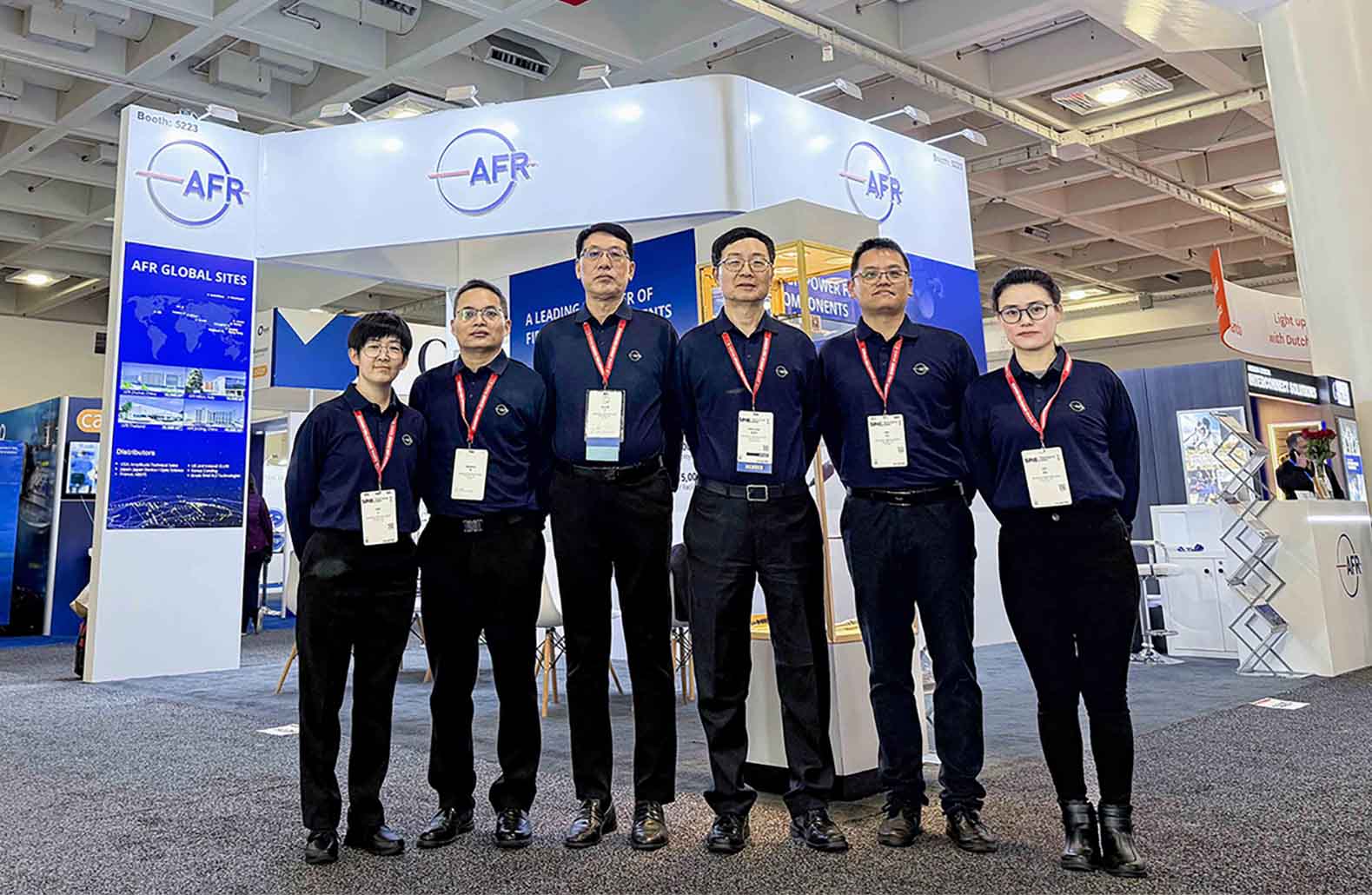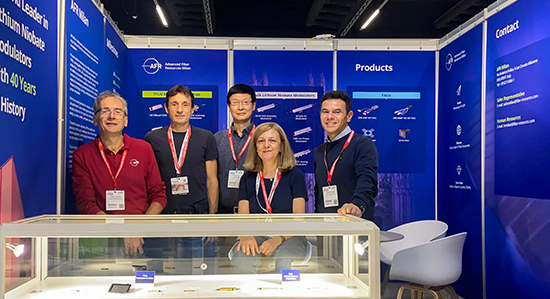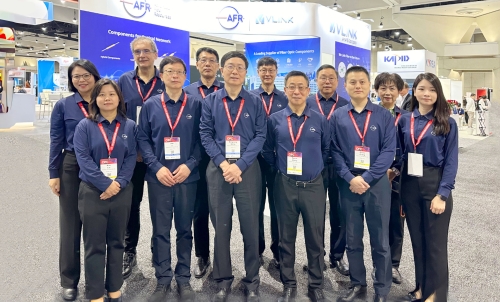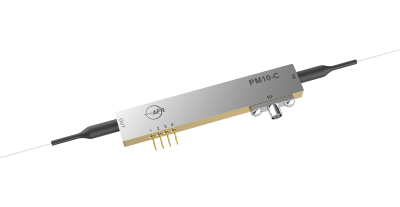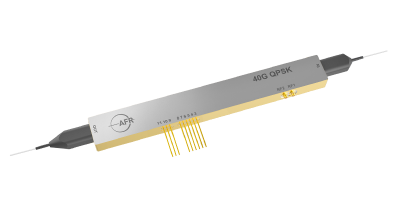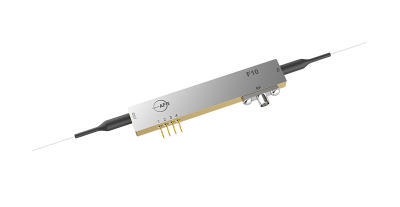March 26-28, 2024 - The world's largest optical networking and communications event, OFC, was held at the San Diego Convention Center. With 12,500 registrants from 74 countries, and 630 exhibiting companies were brought together this year, exploring the future direction of the industry.
Advanced Fiber Resources (AFR) participated in this year's exhibition with its subsidiaries, AFR Milan, Vlink, B&A, and Arcadia Optronix, showcasing a variety of products this year, including Lithium Niobate Modulators, Fiber Array Units (FAUs), LiDAR Light Sources, and Hi-Rel Components, which gained attention for their excellent performance, reliability, and stability.
C+L Band 130 GBaud TFLN CDM
A quad-channel 130 GBaud High-Bandwidth Coherent Driver Modulator integrated with RF driver, designed for 800 Gb/s or 1.2 Tb/s coherent optical communication systems.
C+L Band 70 GHz Intensity Modulator
Thin Film Lithium Niobate (TFLN) intensity modulators expand the performance of traditional lithium niobate modulators combining much lower voltage and smaller footprint while extending the bandwidth above 70 GHz.
Micro-Connectivity Products
Vlink presented its signature fiber array units (FAUs) during the event including CPO/OXC fiber array, PIC coupling fiber array, widely used in 400G/800G/1.6T high speed/ultra-high-speed optical modules, CPO application, Coherent, DCI application and WSS modules. The core competitiveness of Vlink lies in the advanced manufacturing and packaging technology of optical components, the design ability of high-speed optical connection components, and the ability to quickly transform customized products to mass production.
1550 nm LiDAR Light Source
AFR's LiDAR light source features a pulse width and repetition rate tunable design for higher pulse energy and peak power. The product has industry-leading E-O efficiency and stability in a compact package. AFR also provides customized light source services.
Swept Tunable Laser Module
Arcadia Optronix's swept tunable laser module offers a wavelength range of 1528 to 1568 nm and a sweep speed of up to 2 kHz. The output power reaches 20 mW while maintaining wavelength stability < 1 pm.
In addition, AFR and HyperLight co-hosted 2 Thin Film Lithium Niobate Industry Forums during OFC'2024. AFR brought together leading experts from academia and industry, facilitating the exchange of the latest advances and challenges in the field of Thin Film Lithium Niobate (TFLN). "As we have observed, the TFLN supply chain is steadily maturing, becoming more comprehensive and reliable over time," said Dr. Wang, CEO of AFR. "AFR believes that cooperation among peers in the industrial chain will greatly promote the commercialization of TFLN technology."




